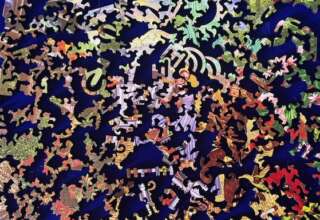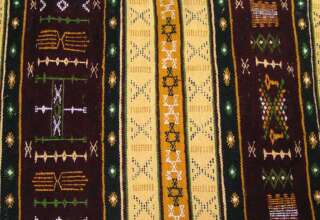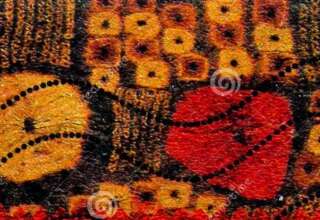
Somé (1999, p. 96) focuses in particular on the role of artists as leaders, relating this role to the interweaving of the sacred and secular in African life:
The connection between the artist as a sacred healer and the community is undeniable. To produce beauty consistently requires a healthy community. Therefore the artist is the pulse of the community; his or her creativity says something about the health of the community. This is be cause another role of the artist consists in acting as the spiritual fountain of the community. The beauty artists produce quenches the thirst of the village. Sometimes I have wished that there were a museum of art in my village. But then I remember that collecting art objects in one place, to indigenous people, would be a sign that people want something from the Other World that is not being supplied adequately; they would be experiencing a thirst that is not being quenched.
In sum, Theory A is founded on the premise that we are born into our diverse leadership roles and learn to engage these roles over time. Leadership is not something that can be taught as is the case in modern societies –where management and leadership are often mistakenly confused. Rather, leadership is accepted as an assigned responsibility into which one grows and “matures—much as in the case of slowly maturing and finding individual identity when becoming an adolescent and eventually an adult in the African community.
The Wisdom, Courage and Vision of Leadership
I have elsewhere (Bergquist, 1993) written about the three primary sources of leadership that exist in most premodern societies. These three sources speak to some of the diversity to be acknowledged, honored and engaged in a Theory A model of leadership. One is successful as a leader when providing wisdom, when demonstrating courage, or when offering a compelling vision. I wonder if the mythic histories of leadership in Africa tend to align with these three sources.
Are some leaders in an African community –and specifically in an African organization assigned (or live into) the role of being a rich source of knowledge about not just the past heritage of the organization, but also the present-day situation in which the organization finds itself. This wise leader is often someone who has worked in the organization for many years and is knowledgeable about all its operations. The wise leader has learned how to escape the silos to be found in many contemporary organizations (whether in Africa or elsewhere in the world). Certainly, the systemic orientation of Theory A would encourage this “beyond the silo” perspective of leadership.










Charly Wiliamse
August 16, 2021 at 10:23 pm
I have thought so many times of entering the blogging world as I love reading them. I think I finally have the courage to give it a try. Thank you so much for all of the ideas!
power bi course
December 7, 2021 at 7:29 am
Thanks for sharing information.